AMD Radeon RX 7600 XT: two minute review
Well, not everything can be fixed by giving it an extra 8GB VRAM.
The AMD Radeon RX 7600 XT is Team Red's latest play at the lower midrange graphics card market, and for what it is, it's a decent enough graphics card, offering great 1080p performance with some very solid 1440p performance to boot.
It offers substantially better ray tracing performance than the AMD Radeon RX 7600, making one of the best 1080p graphics cards on the market right now, but the card unfortunately doesn't live in a vacuum.
With a US MSRP of $329.99 (about £265/AU$420) and with the Nvidia GeForce RTX 4060 offering better performance overall for about $30 less, the RX 7600 XT becomes a lot harder to recommend, which is frustrating since this market segment is much more price sensitive than the midrange and premium tiers are.



There's no reference card model from AMD, so as with the AMD Radeon RX 7700 XT, you're limited to whatever AIB partners like XFX and ASRock produce. This means that the design of the cards are going vary considerably, as will their prices and clock speeds.
Essentially, what you're getting with the RX 7600 XT is an overclocked RX 7600 with an extra 8GB VRAM. It's specs are otherwise pretty much identical, which goes a long way to explaining the level of performance you're getting with this card.












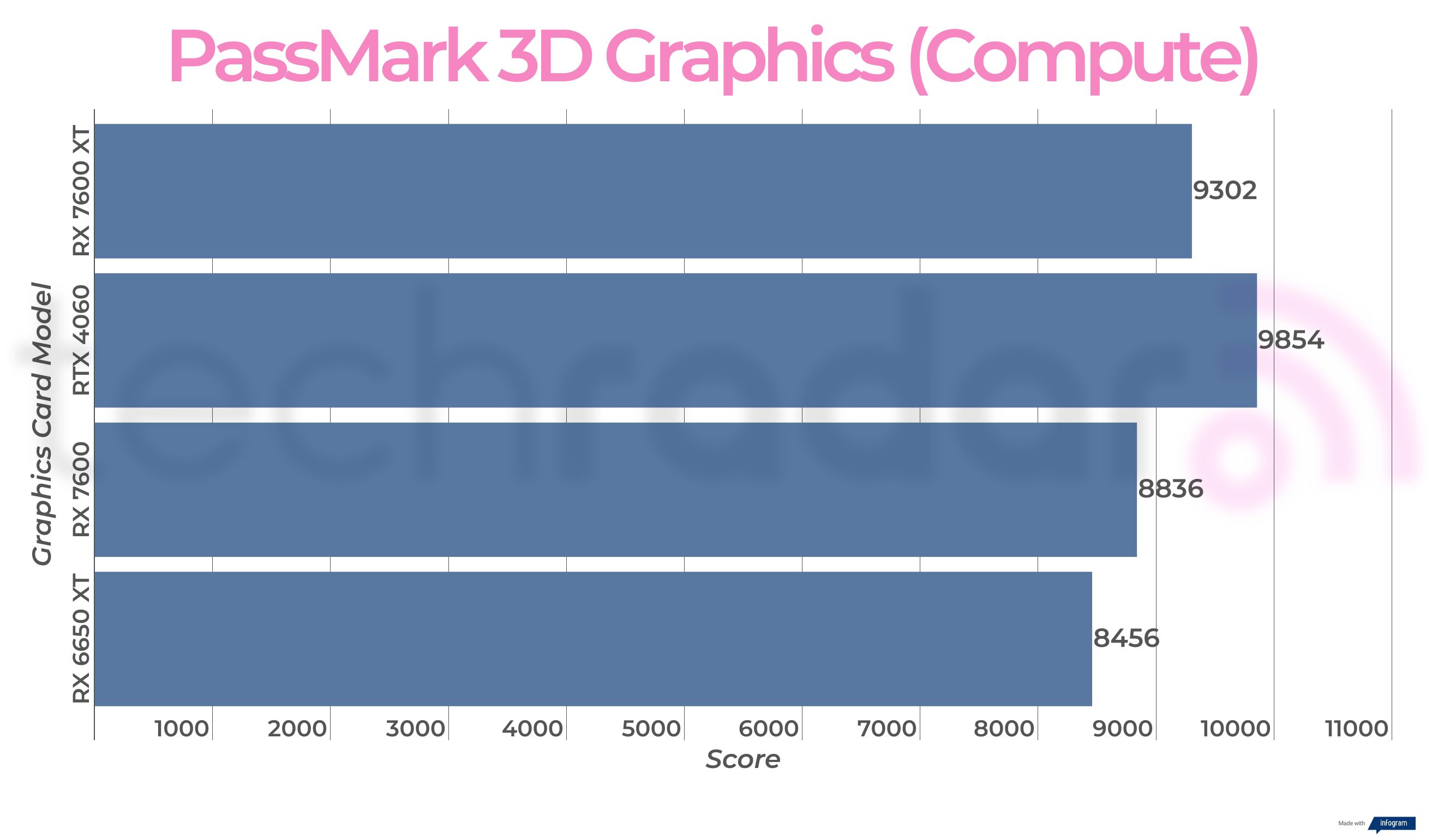


In terms of synthetic performance, the RX 7600 XT comes in about 2% better than the RX 7600, and about 2% worse than the RTX 4060, with the expected difference between stronger rasterization performance for the RX 7600 XT and better ray tracing for the RTX 4060 holding true here.







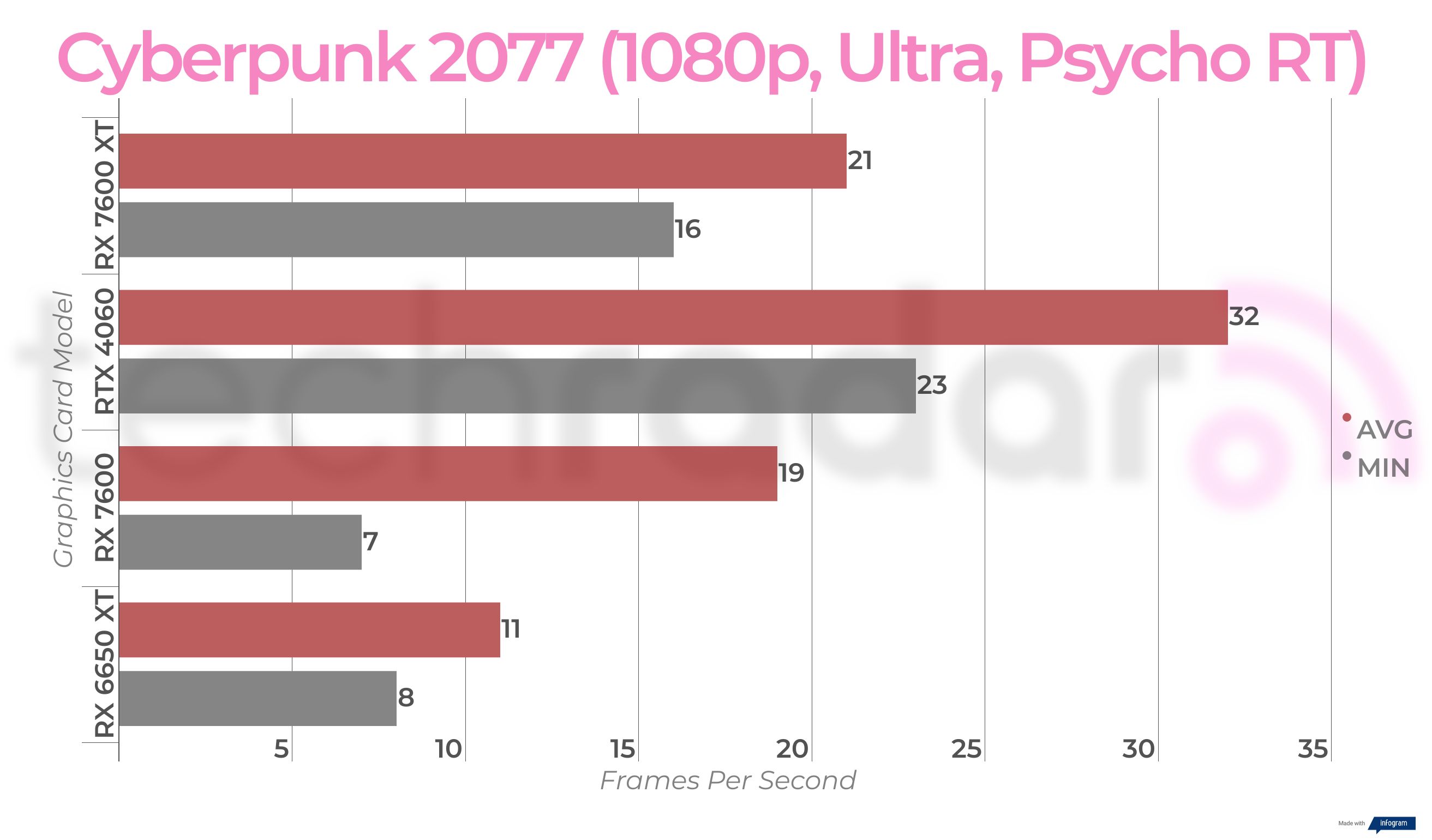

For gaming, the RX 7600 XT is pretty great for a 1080p card, as was the RX 7600 before it, and the extra VRAM does help it get some extra 1440p performance, especially when it comes to minimum frame rates which help determine a game's stability. Its ray tracing performance is also generally improved over the RX 7600 as well.
Compared to the RTX 4060, however, it comes in about 5% behind overall, which is where we were really hoping to see the RX 7600 XT differentiate itself thanks to the extra VRAM.



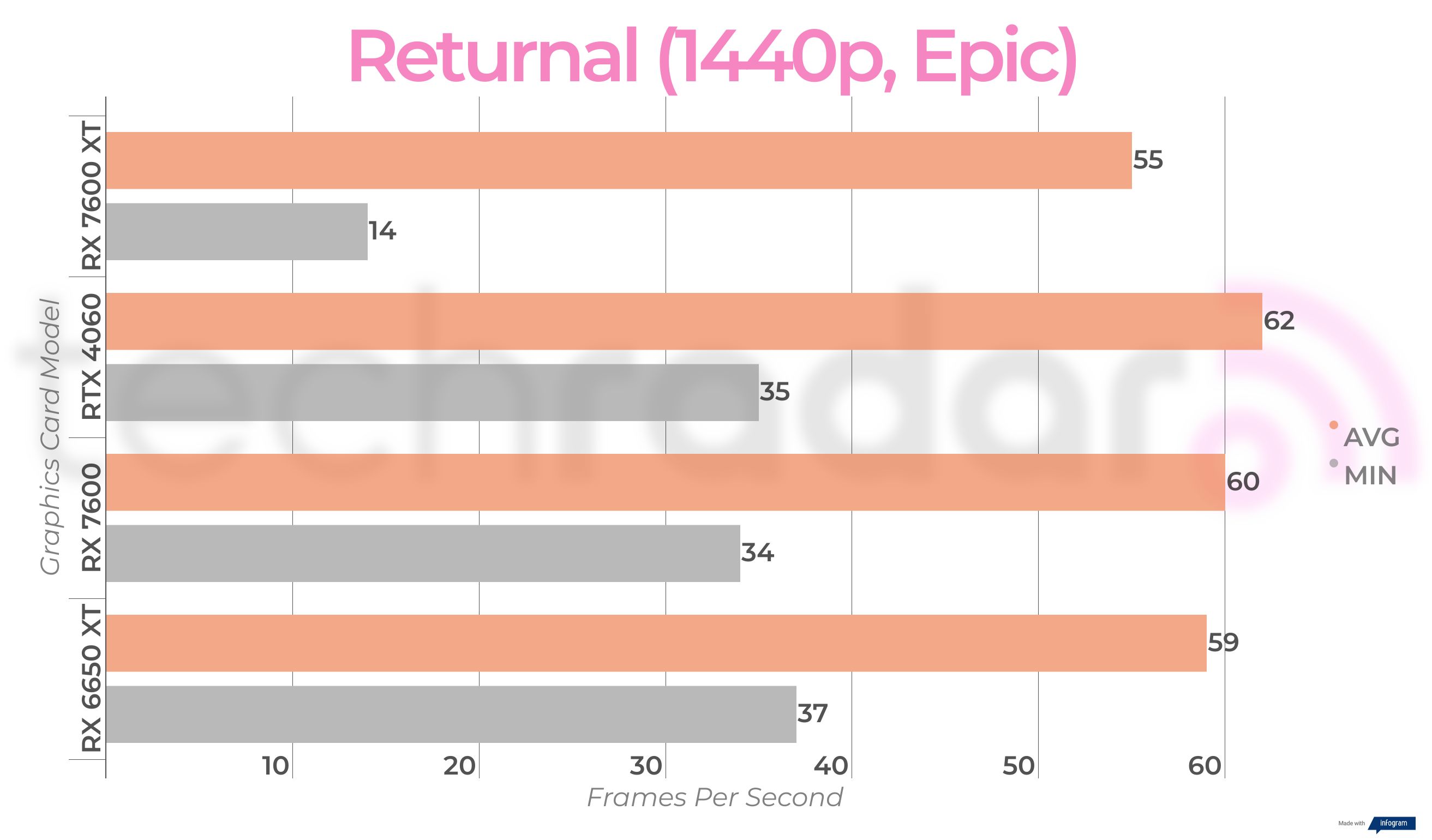



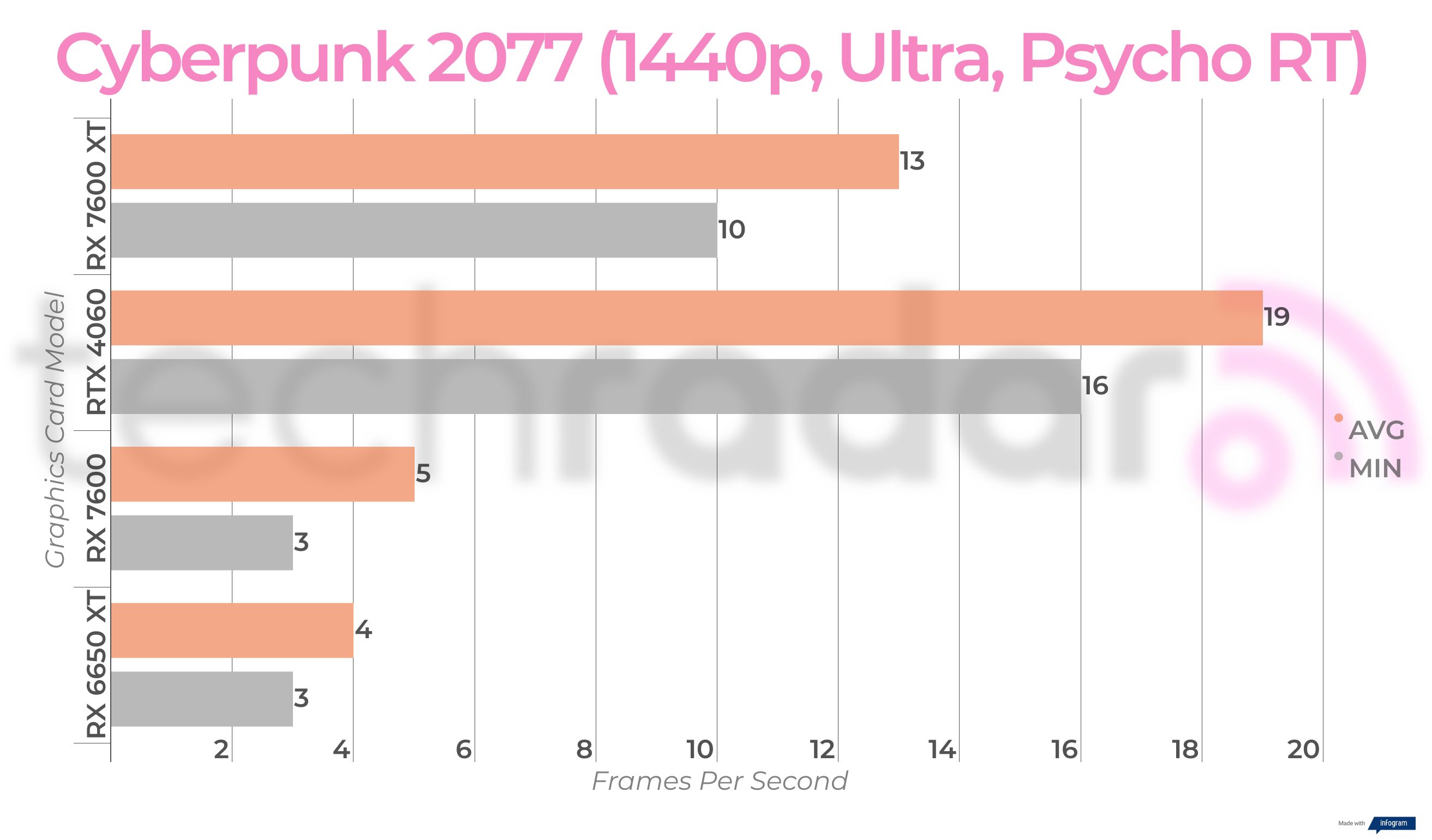
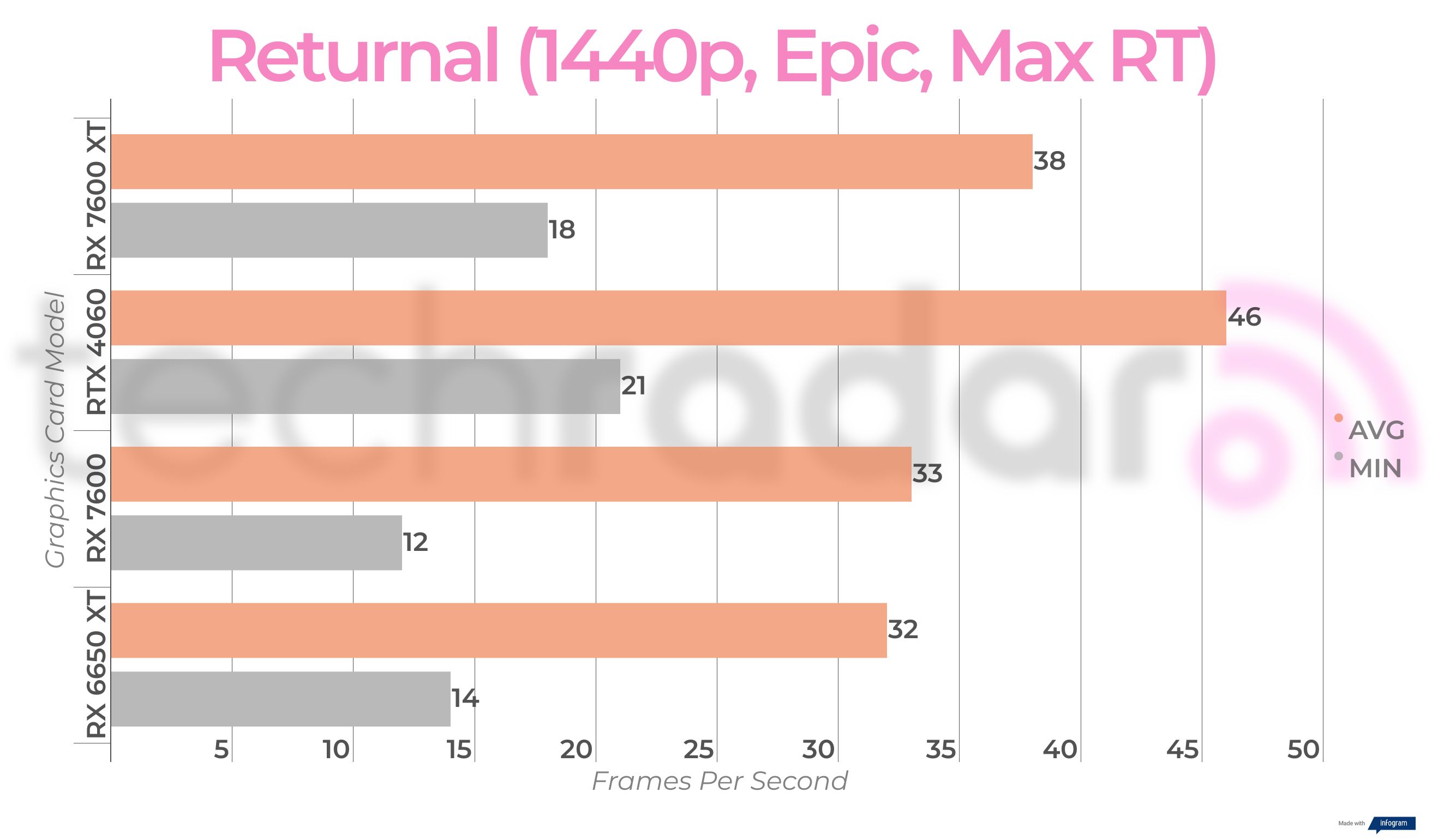
In 1440p gaming performance, the extra VRAM does give the RX 7600 XT about 10% better performance on average compared to the RX 7600, and it ekes out a win against the RTX 4060 in non-ray-traced gaming performance at 1440p, but it gets about 25% lower ray-traced 1440p performance than the RTX 4060.
Given the price difference here, the RTX 4060 is simply the better value for both 1080p and 1440p gaming, despite having 8GB less VRAM.
In the end, the memory bandwidth, constrained by a 128-bit memory bus, is simply too small for the larger frame buffer to really make a substantial enough impact. For that, the AMD Radeon RX 7600 XT becomes harder to recommend than it should be.

AMD Radeon RX 7600 XT: Price & availability
- How much is it? US MSRP listed at $329.99 (about £265/AU$420)
- When is it out? It is available January 24, 2024
- Where can you get it? You can buy it in the US, UK, and Australia
You can get the AMD Radeon RX 7600 XT starting on January 24, 2024 with an AMD MSRP of $329.99 in the US, which converts to about £265 in the UK and AU$420 in Australia.
Since there's no reference model for this card, you'll also likely find this GPU selling for higher once all the added bells and whistles like RGB lighting and such are factored in.
This is easily the biggest disadvantage of this card, considering that the Nvidia RTX 4060 is $30/£24/AU$36 cheaper, and the RX 7600 is even cheaper than that at $269.99 (about £215/AU$380). Still, for some who want to make sure that their gaming PC is setup for the future with the extra VRAM, the extra investment might be worth it.
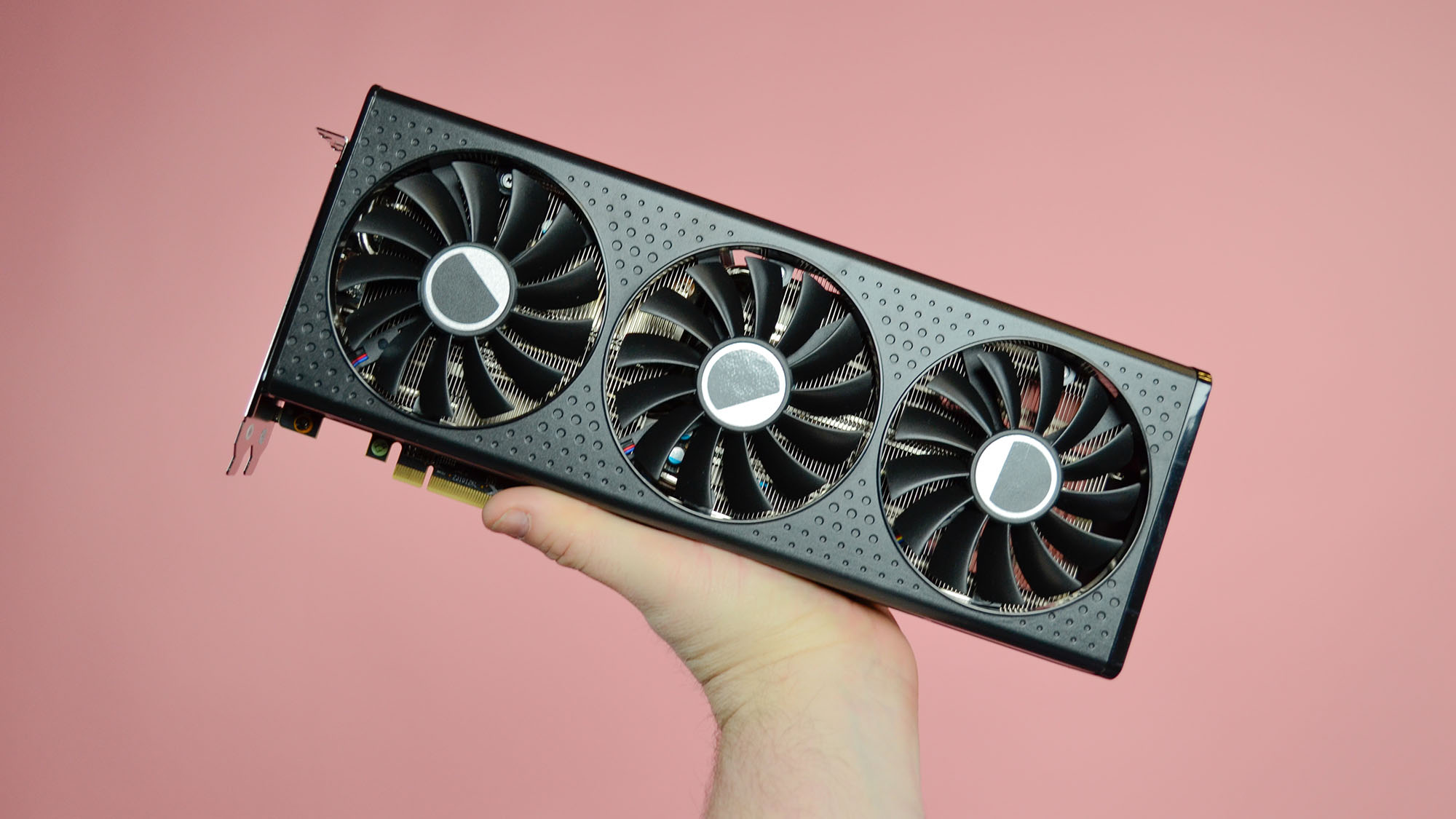
Should you buy the AMD Radeon RX 7600 XT?
Buy the AMD Radeon RX 7600 XT if…
Don’t buy it if…
Also consider
How I tested the AMD Radeon RX 7600 XT
I spent about a week with the AMD Radeon RX 7600 XT, putting it through a full battery of benchmarks and general performance testing, including playing some of the best PC games on the market on the highest settings available at 1080p.
I've been reviewing PC hardware for several years now, and I have extensively tested and retested every major graphics card release of the past two generations of graphics cards, so I am intimately familiar with their varying degrees of performance. As such, I know how well a card needs to perform for a given price, relative to the market, and given my lifelong passion for PC gaming, I also know what the intended audience for a graphics card is going to demand, and whether the cards I review meet these exacting standards.
First reviewed in January 2024
from TechRadar - All the latest technology news https://ift.tt/hZT5gKO

No comments:
Post a Comment